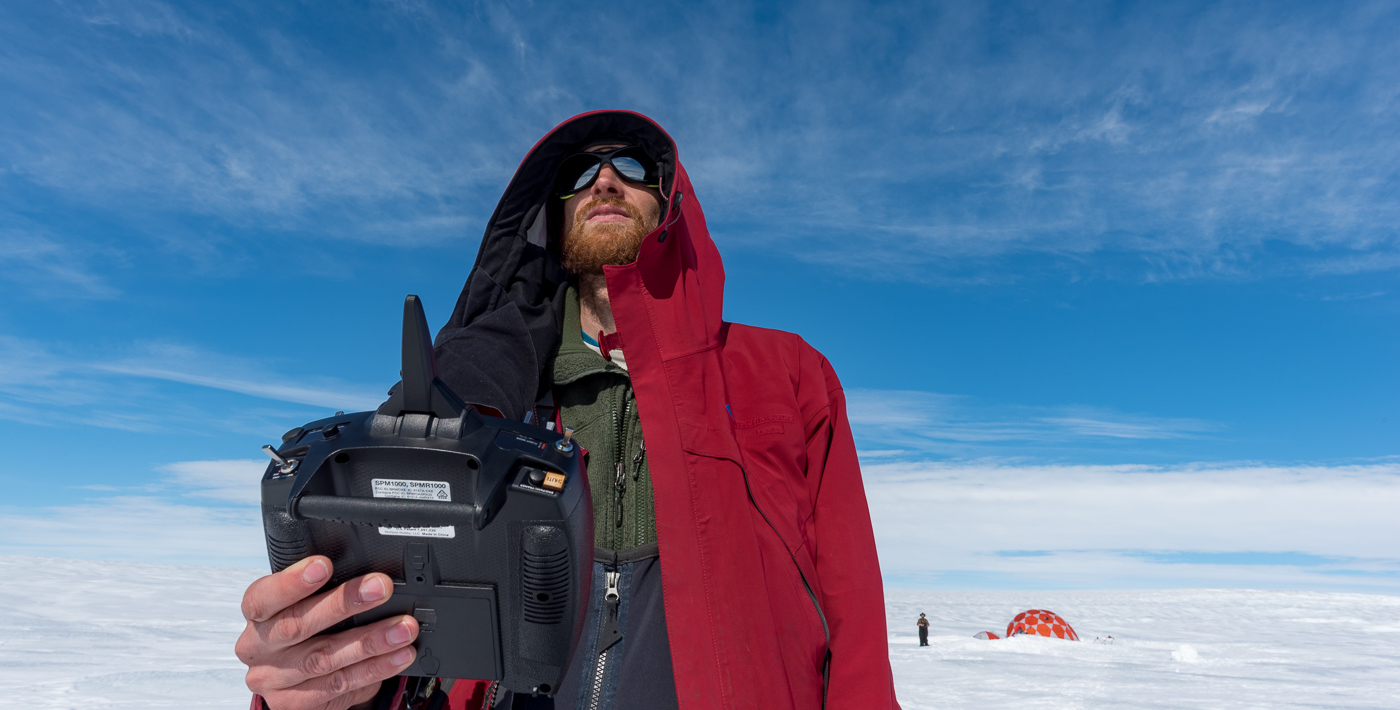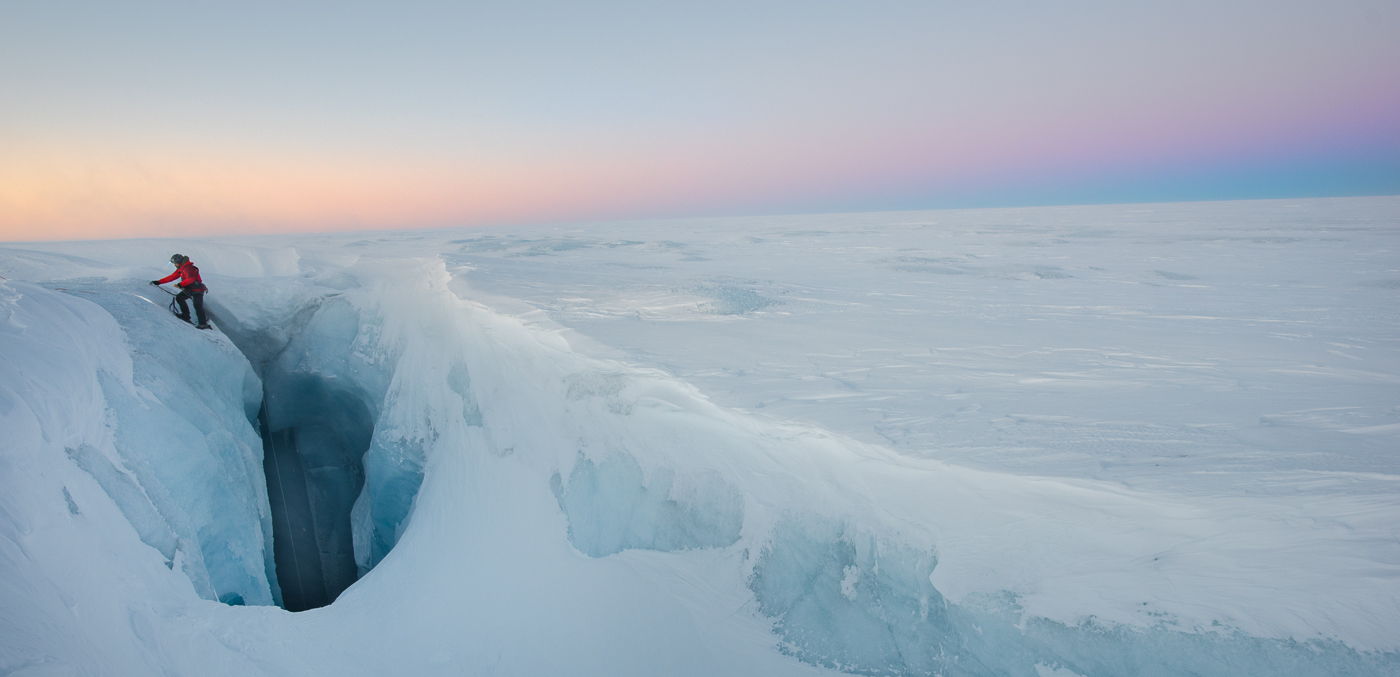






Artist's Statement
Jason Gulley
Over the last two decades, soaring temperatures have increased the area of the Greenland Ice Sheet covered by lakes and rivers in summer by 27%. The Greenland Ice Sheet is now the largest contributor to global sea level rise.
Nearly all meltwater flowing off the ice sheet travels to the ocean through enormous caves, which swallow entire lakes and rivers and funnel their water to the ice sheet bed. These surges of meltwater lubricate the contact between the ice sheet and its rocky bed, increasing the speed that the ice sheet slides toward the ocean. As climate warming melts larger areas of the ice sheet each summer, glaciologists are concerned increased water flow to the bed may cause larger areas of the ice sheet to speed up and slide toward the ocean faster than today.
Over the last three years, I collaborated with a team of scientists and explorers to follow meltwater’s journey across the Greenland Ice Sheet surface and into its seldom-visited caves. We helicoptered onto the ice sheet and established remote camps to document lakes and rivers and their flow into caves. Because scale is often difficult to establish in aerial photos of the ice sheet, I used the helicopter’s shadow as a reference in photos lacking other identifiable features. We then returned in autumn, when falling temperatures froze the ice sheet surface and shut off summer’s torrent of meltwater flow into the caves, allowing us to descend into them.
The main body of my work documents the melting Greenland Ice Sheet and the scientists who are studying it. The last three images in my collection are an expansion of the project to document how melt is changing arctic communities. Traditionally, Inuit communities used sled dog teams to hunt on sea ice. As sea ice disappears, however, those communities are increasingly discarding their sled dogs and replacing them with snow mobiles and boats.

